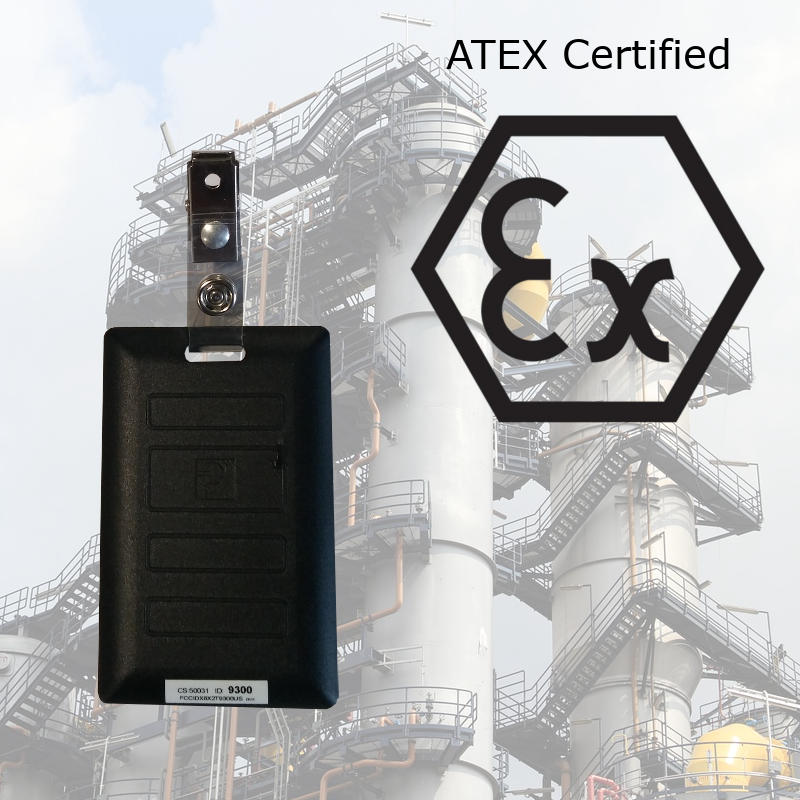
All three of these technologies use active (battery powered) tags, which allow them to reach distances of over 65 feet (20 meters) and can relay sensor information back along with their unique identification. This makes them ideal for situations where other technologies cannot meet the requirements. One such example would be in transit tracking of a shipment for temperature, tampering or g-force. The reader can then be integrated with GPS allowing the entire shipment to be tracked much more cost effectively than GPS tracking each container individually. Of the above 3 Long Range RFID Technologies SkyRFID works in the 433 MHz arena where possible as it provides the most durable platform for long range activities.
Development on 433 MHz RFID started in the early 1980's's and is fundamentally different than other RFID technologies. In most RFID technologies (125kHz, 134.2kHz, 13.56kHz, 860~960MHz) it is almost always a passive (or unpowered) tag that is "excited" or powered up by the readers signal. SkyRFID 433 MHz technologies we offer do the exact opposite;. The reader is powered but listens for the transmissions sent by the 433 MHz battery powered tags. This allows the reader to detect far weaker signals, sent with significantly greater strength by the battery powered tag. Using our standard tag battery setup the battery life of the tags is over 5 years. SkyRFID can adjust the beacon rate of the tags depending on the usage requirements of the solution. SkyRFID 433 MHz tags operate in extreme conditions such as reading though 3+ feet of concrete or rock; through 4 feet or more of heavy liquids, making it the tag of choice for 1st responders looking for people in really nasty conditions. Wear our tag and they will find you.
SkyRFID 433 MHz technology is long range long life technology that is used for many Dynamic Asset Management (DAM) solutions such as Remote Location Asset Monitoring, Secured Access to a Facility, Real Time Tracking of Assets and Personnel in any environment including Intrinsically Safe - Atex Certifification.
Designed for applications in Transportation, Mining, Emergency Evacuation, Supply Chain, Petrochemical, Healthcare, Manufacturing, Gated Communities, Education, and the Military. The unique characteristics of our 433 MHz technology make it suitable for environments where interferance or electro-static sensitivity prevent most other electronics such as airports or specialized chemical storages. The sealed ATEX certified tags emit such a low power signal that it is well below any regulatory guidelines, making them safe for use in static free areas where cell phones must be powered down.
The nature of the signal is also fairly unique in that it is able to pass through quite a large amout of rock, concrete, steel, or water. Making it beneficial for finding victims in mining accidents or avalanches.

Battery powered tags are excellent for situations where you also want to collect information or allow the individual to signal for help. Since they are not reliant on power from a reader to function, battery powered tags allow for duress buttons or fever monitoring in hospitals.
Real-Time Location Tracking (RTLS) accounts for nearly all active tag RFID systems. The active tag transmits its identity on a predetermined basis, and with the correct antenna placements you can determine the location of the active tag. Sensors can be added to the tags for real time temperature sensing and real time motion sensing.
Temperature sensing tags can be used to store temperature information on a timed basis and send the collected information to the active tag reader. In addition the temperature sensing tag can be set up to set off an alarm condition should the limit be exceeded.
Motion sensing tags can be set up to transmit a signal when moved or signal until movement stops. This is ideal for high value asset control where you want to know if an asset is moving so that you can determine if the movement is justified or an intrusion.
Patient tracking in health care facilities is also a common application for active RFID tags. Using a wrist band tag a patients movements within a certain location are known and if the patients goes oustide of the area you can have an alarm sound or have a health care giver return the patient to the controlled area.
Most of our 433 MHz line of tags can be enhanced with motion and temperature sensors, tuned for your specific needs. If you want to track assets that can be moved but also can remain stationary for a period of time, then we can equip our Industrial Tags with motion detectors so that when motion is sensed the tag beacons differently thus sending a signal to your applicaiton that motion has been detected. When the asset stops moving the sensor again changes it's beaconing characteristics and once again the application is aware that the asset has stopped moving.
Antenna selection is critical to getting maximum read rate success. You need to match the antenna(s) to the specific application requirements and to the physical environment. For more information on RFID Reader Antennas you can check our product page. You can also learn more about selecting the right antenna(s) in our RFID Reader Antenna Tutorial.
Numerous different configurations are available for 2.4 GHz readers and active tags. Most of the active readers can read up to 100 tags simultaneously. 2.4GHz RFID Active Tags can be configured to activate when moved, send a signal at predetermined intervals, record temperatures and more. Active tag RFID is also ideal for Real-Time Location Tracking (RTLS) projects.
Both are promising new technologies which could add new functionality into RFID systems. We'll continue to publish updates as this technology advances towards commercial viability.